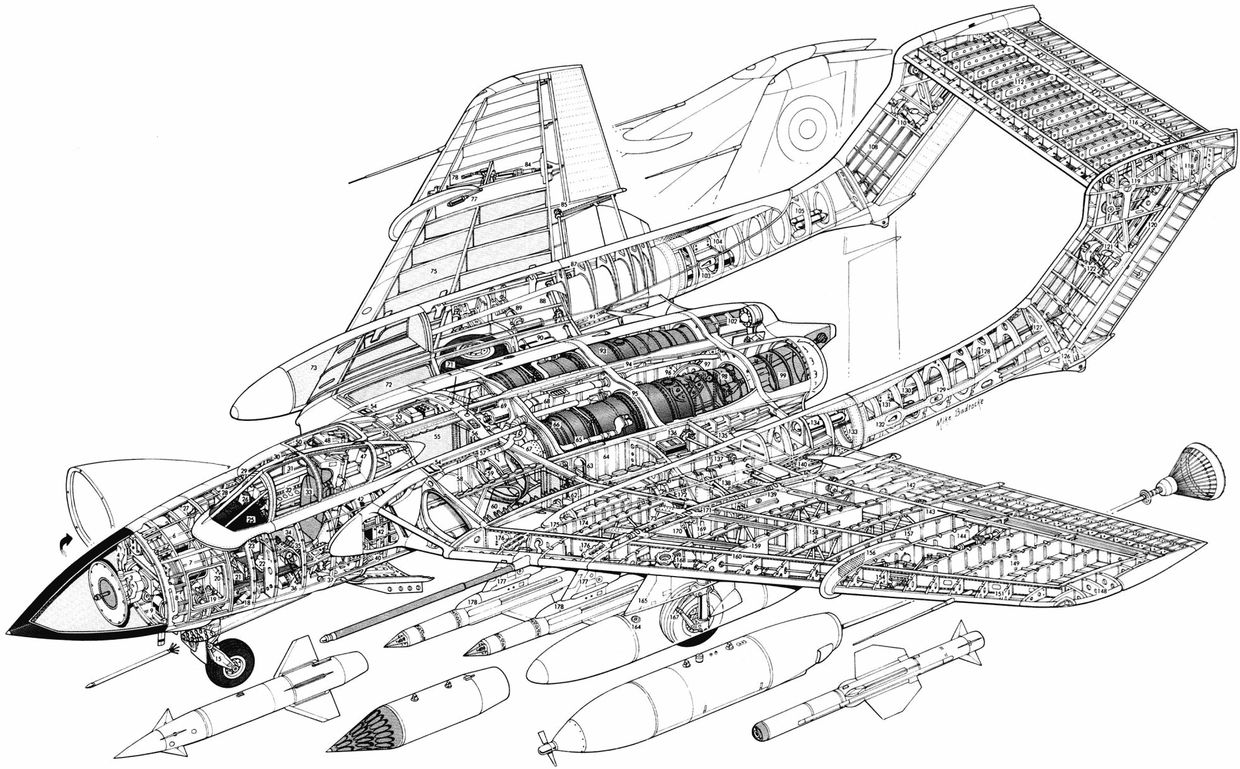Signed in as:
filler@godaddy.com
Signed in as:
filler@godaddy.com

The de Havilland DH.110 Sea Vixen was a British twin-engine, twin boom-tailed, two-seat, carrier-based fleet air-defence fighter flown by the Royal Navy's Fleet Air Arm during the 1950s through to the early 1970s. The Sea Vixen was designed by the de Havilland Aircraft Company during the late 1940s at its Hatfield aircraft factory in Hertfordshire, developed from the company's earlier first generation jet fighters. It was later called the Hawker Siddeley Sea Vixen after de Havilland was absorbed by the Hawker Siddeley Corporation in 1960.
The Sea Vixen had the distinction of being the first British two-seat combat aircraft to achieve supersonic speed, albeit not in level flight. There have been no flying Sea Vixens since 2017.
Crew: Two, Pilot and Observer
Length: 55 ft 7 in (16.94 m )
Wingspan: 51 ft 0 in (15.54 m)
Height: 10 ft 9 in (3.28 m)
Wing Area: 648 ft squared (60.2 m)
Empty Weight: 27,950 lb (12,680 kg)
Loaded Weight: 41,575 lb (21,205 kg)
Max Take Off Weight: 46,750 lb (21,205 kg)
Powerplant: 2 x Rolls Royce Avon Mk 208 turbojets, 50 kN (11,000 lbf) each
Maximum Speed: Mach 0.91 at sea level
Range: 790 mi (1,270 km) with internal fuel
Service Ceiling: 48,000 ft (15,000 m)
Rate of Climb: 9,000 ft/min (46 m/s)
Wing Loading: 64.2 lb/ft squared (313 kg/m squared)
Thrust Weight: 0.54
Rockets: 4 x Matra rocket pods with 18 x SNEB 68 mm rockets each
Missiles: 4 x Red Top or Firestreak air to air missiles
Bombs: 2 x 500 lb (227 kg) bombs
Avionics: GEC AI.18 Air Interception Radar